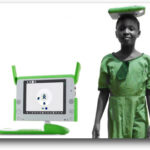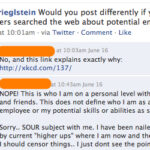Traveling has me late with this post. Procrastination too. I’ve been worried about “sour grapes” and hoped that with a little time, I might better be able to get the right tone.
A while back, when it seemed that we did not win the MacArthur DML grant, I said I was interested in reviewing the winners to try to guess what the judges valued. I set aside some time this morning.
On a deeper review of the innovation award winners, my reaction to the innovation winner pool is a more forceful version of my first thought: they are kind of lame.
They are just not exciting to me.
Clearly, they were exciting to the judges. So it must be a values disconnect. The judges understood the idea of Innovation in Digital Media and Learning differently than I did. It’s their competition, of course, they can interpret their own words however they want.
So I tried to go back to the innovation contest explanation to see how they described it. I wanted to see how much I was projecting what I value/ believe onto the words they used to describe what they were looking for. When I was reading the page, it sounded completely different from what I had in my head. It sounded like their description fit the winner pool pretty well, actually, so clearly I had just read my own meaning into what was there. Then I saw the “Updated” note at the top: February 21, 2008.
The description of what they were looking for was changed on the date they announced the winners. No wonder the description and the winners match up nicely.
I understand it’s a new area and so of course definitions will change. It just seems strange to change the questions on a test after you’ve given the answers. It would have been easy to update their thinking somewhere else.
Changing the “what we are looking for” page makes it very difficult for the student (me) to learn where they went wrong with the answer. I didn’t think to take screenshots, so all I could go on is a six-month-old interpretation of memory.
This makes it impossible for me to argue about the judges’ choices based on the original description of the competition. And maybe that’s kind of a good thing – helps me avoid a little of the sour grapes deal. I’ll just argue based on what I believe.
Common Themes in the winner pool:
– Games (roughly half of the winners are a game of some sort)
– Academic projects (most are housed in, or born from, a university, and none have a “business model” that would make them economically sustainable, with the possible exception of FabLab, which might squeak by on laser etching unless one of their machines breaks.)
– As Tom Hoffman pointed out, four of seven are from Duke or University of California schools.
– They are all Nonprofits? Seems like it, but it is hard to tell. Didn’t see any mention of pricing, not even “free” on anyone’s website. The word nonprofit is large-ish on their tag cloud.
These are not really exciting themes to me.
(Nonprofit btw is neutral to me. The only annoyance is the consistency of it compared to the stated desires of the competition. They decided not to explore other structures to achieve impact. Go with what you know, I suppose. I know I do it all the time, it’s just not very innovative.)
Here are themes I would have been excited about:
– Ideas that solve an existing pain. NOT technology looking for an application.
Educational games are “neat”. If they are not cooler than what is on the X-Box, it’s a hard sell to kids (at any age.) So then just force them to use it in the classroom, and you have a hard sell to schools. It’s massive supply competing for minimal demand. It’s not innovative if it doesn’t get used.
– Ideas with leverage. The smaller effort, big impact.
Two of these “Digital” innovations have serious hardware bottlenecks. All of them, existing in the “sort of neat” category, will have very serious, potentially terminal, marketing/ adoption friction.
– Transparency in the process to build community.
Communicate. Participate. Network. Collaborate. Community. These are all buzzwords the actual competition ignored in their process. More than the money, connecting the 1000 project initiators with each other in a meaningful collaborative project/learning community around the contest would have done huge things for digital media and learning.
– Economic sustainability.
This is just the entrepreneur in me. I get this is my value. I just don’t think the grant process, at the 250k level, provides enough time to make much of a dent. I think there needs to be some other plan besides grants – the success rate is just too low. Getting paid forces the initiative into quantifiable relevance to someone. This is good and helps reduce “neat” ideas that don’t really go anywhere.
– Defensible Positioning.
It’s a business term, I know, but it matters if there is going to be an impact. Where do these ideas fit in the world today? Do they have space? Can they hold on to it? How can they avoid wimpy “me too”-ness? YouthActionNet Marketplace is wonderfully idealistic, but TakingITGlobal dominates that space, does a great job, and has better sponsors. How is YouthAction different? Hypercities is cool, but google earth already combines story, space, and soon mobile. The folks that are interested already use google. It seems like Hypercities’ positioning is only safe in academia for academics (they have been receiving grants since 2003.)
– Mashable or Open Source-able.
Hypercities could be mashable (see google above). Maybe the MILLEE project could become a mobile platform for learning (though they seem to be aiming at developing their own language learning games.) This goes back to leverage, but these ideas seem to have a “create-it-alone” mentality built-in. This isn’t a very modern approach, and I don’t think it’s a recipe for a big impact. Getting people to invest time in your project serves the same purpose as getting paid – you have to be relevant and meaningful to someone. (Our project, for full disclosure, is mashable, but not very open-source – mostly because our niche is not too technical. I do respect the challenges with this and would have loved to see someone else do better.)
Going into the competition, we said we didn’t have any experience with grants and thus we were interested in trying it and learning. I’m disappointed that I don’t feel like I learned much. I can’t see a clear, coherent, cause and effect in the selection of the winners (I can’t even check the question). The “right” answers don’t seem right to me and nowhere is there an explanation that might add to my understanding of the digital media and learning space.
The cultural gap between my business background and this competition, as much as it fits my stereotype of academia, feels painful. I want to be excited about the decent money that is being spent on innovation to improve education.
I care deeply about education. There are exciting possibilities for innovation and change with technology and education. I really hope that one of these initiatives creates a meaningful impact on digital media and learning. I would love to be wrong.




